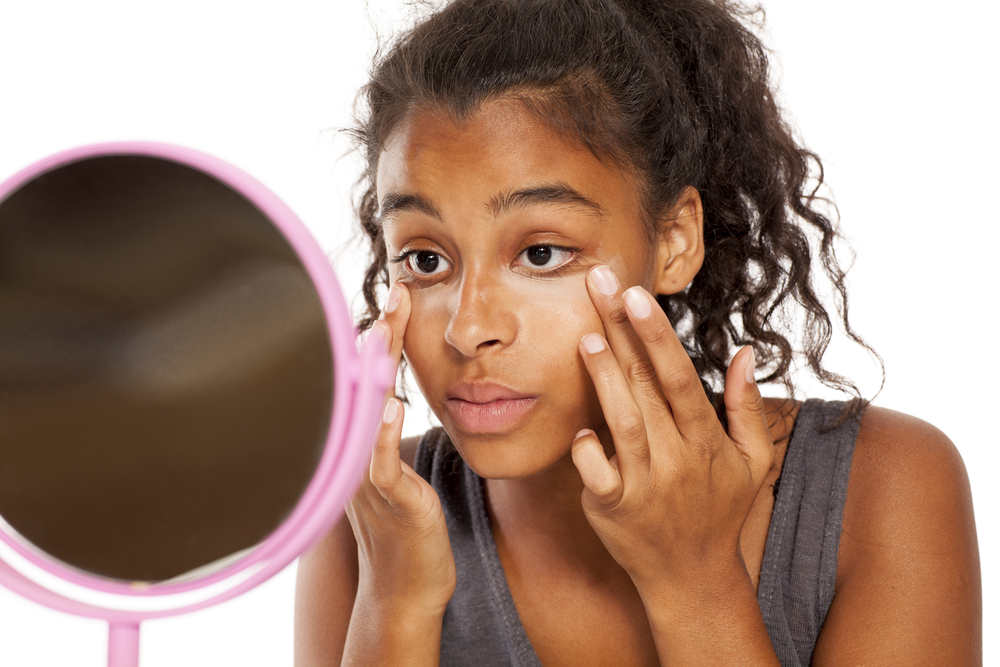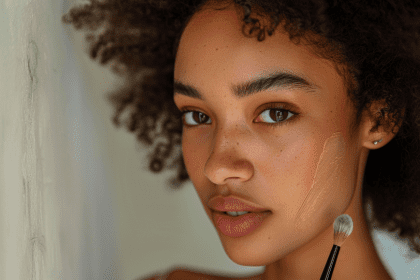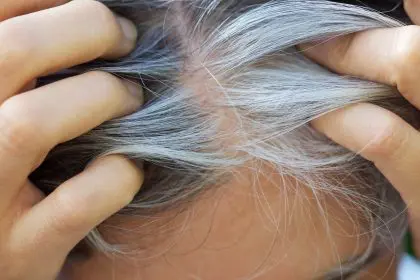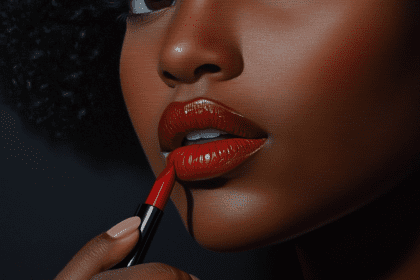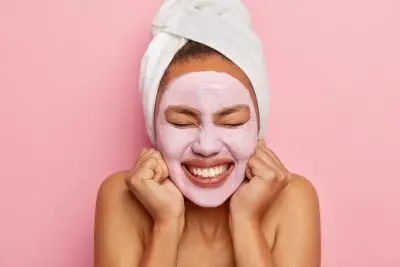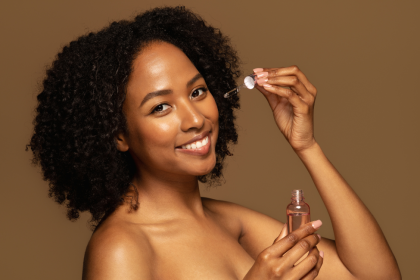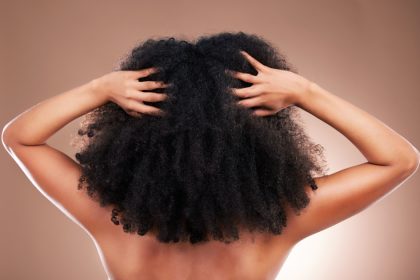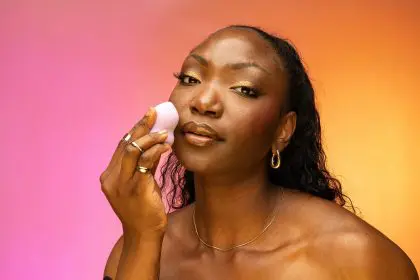Foundation sales are plummeting faster than anyone in the beauty industry wants to admit, and it’s not because people stopped caring about their appearance. It’s because an entire generation has figured out that covering your face with liquid makeup every day might not be the path to looking and feeling your best after all.
The foundation exodus represents one of the most significant shifts in beauty culture in decades, with people abandoning the full-coverage, picture-perfect look that dominated social media for years. What started as a pandemic-era necessity has evolved into a conscious choice to prioritize skin health over cosmetic perfection.
This isn’t just a temporary trend or a response to working from home. It’s a fundamental rethinking of what beauty means and how much effort, time, and money people want to invest in creating an artificial version of their natural appearance every single day.
The pandemic broke the makeup habit for good
When masks became mandatory and video calls replaced in-person meetings, millions of people discovered what their skin looked like without daily foundation application. Many were shocked to realize that their “bad skin” was actually damaged from years of heavy makeup use and aggressive cleansing routines.
The break from foundation during lockdowns allowed skin to heal from the constant cycle of application and removal that had created many of the imperfections that foundation was supposed to hide. People started noticing that their skin looked better without makeup than it had looked with makeup for years.
Working from home eliminated the social pressure to wear foundation daily, giving people permission to experiment with bare skin and discover that most people didn’t actually notice or care about minor skin imperfections that had seemed catastrophic in the mirror.
The time savings from skipping foundation became addictive once people calculated how many hours per year they’d been spending applying, touching up, and removing makeup. The 15-30 minutes saved each morning added up to days of reclaimed time annually.
Video call lighting often made foundation look cakey and unnatural, leading people to either go without makeup or realize that their skin looked better on camera when it wasn’t covered in products designed for in-person viewing.
Skincare replaced makeup as the beauty priority
The explosion of skincare knowledge and products has given people tools to actually improve their skin rather than just covering problems with makeup. When you can address underlying issues like texture, tone, and blemishes through skincare, foundation becomes unnecessary rather than essential.
Social media shifted from showcasing heavy makeup looks to celebrating natural skin texture and “skin positivity” movements that encouraged people to show their real faces without filters or foundation. This cultural change made bare skin socially acceptable and even aspirational.
The rise of “skinimalism” as a beauty philosophy promoted the idea that healthy skin is more attractive than perfectly covered skin. This movement positioned foundation as a barrier to achieving the dewy, natural glow that became the new beauty ideal.
Advanced skincare ingredients like retinoids, vitamin C, and chemical exfoliants became mainstream, giving people access to treatments that actually improve skin quality rather than just camouflaging imperfections. When your skin genuinely looks better, foundation becomes redundant.
The understanding that foundation can clog pores and interfere with skincare product absorption led many people to choose skincare over makeup. The realization that foundation might be preventing skin improvement motivated people to eliminate it from their routines.
Foundation formulas never lived up to the promises
Despite decades of innovation and marketing claims, most foundations still oxidize throughout the day, settle into fine lines, and create an obviously artificial appearance that doesn’t look natural in person or in photos. The gap between marketing promises and actual performance became impossible to ignore.
The color matching problem that plagues foundation purchases led to countless expensive mistakes and settling for shades that never quite matched natural skin tone. Even professional color matching often resulted in foundations that looked wrong in different lighting conditions.
Transfer issues with foundation on clothing, phone screens, and other people became increasingly unacceptable as people became more conscious of hygiene and cleanliness. The constant worry about makeup rubbing off created anxiety that outweighed any confidence benefits.
The heavy, cakey feeling of foundation, especially during hot weather or physical activity, made many people realize that comfort was more important than coverage. The sensation of makeup melting off during exercise or sweating became a deterrent to foundation use.
Long-wear formulas that required aggressive removal created a cycle of skin damage that made foundation necessary to cover the problems it was creating. People began recognizing this self-perpetuating cycle and choosing to break it.
Natural beauty movements gained real momentum
The body positivity movement extended to faces, encouraging people to accept and celebrate natural skin texture, pores, and minor imperfections as normal rather than flaws that needed correction. This cultural shift reduced the shame associated with visible skin texture.
Influential people in media, entertainment, and social media began appearing without foundation, normalizing bare skin and proving that professional success didn’t require perfect makeup. These role models gave people permission to show their natural faces.
The “no makeup makeup” trend evolved into actual no makeup, as people realized that achieving a natural look was easier when you actually weren’t wearing any makeup at all. The irony of using multiple products to look natural wasn’t lost on consumers.
Environmental consciousness made some people reconsider the packaging waste and chemical ingredients in foundation products. The sustainability movement included makeup consumption, leading people to question whether foundation was necessary enough to justify its environmental impact.
The feminist reclamation of natural appearance positioned foundation as a tool of patriarchal beauty standards rather than personal choice. While not everyone embraced this political angle, it provided intellectual framework for people who were already questioning their makeup habits.
Alternative products filled the coverage gap
Tinted moisturizers, BB creams, and skin tints provided light coverage options that enhanced natural skin without the heavy, artificial look of traditional foundation. These products offered compromise solutions for people who wanted some coverage without full foundation.
Color-correcting products and spot concealers allowed targeted coverage of specific concerns without covering the entire face. This surgical approach to coverage appealed to people who wanted to address particular issues while maintaining natural skin appearance elsewhere.
Bronzers, highlighters, and cream blushes became popular for adding dimension and color to bare skin without the need for foundation as a base. These products worked better on natural skin and provided a more authentic-looking enhancement.
Skincare products with subtle tinting or light-reflecting properties provided the psychological comfort of “wearing something” without the commitment and appearance of traditional foundation. These hybrid products satisfied the desire for enhancement while maintaining natural skin texture.
Professional makeup artists began promoting techniques that enhanced natural skin rather than covering it completely, teaching people to use makeup strategically rather than as a uniform mask. This education helped people achieve better results with fewer products.
The future of face makeup is looking natural
The decline in foundation use represents a permanent shift in beauty culture rather than a temporary trend that will reverse once pandemic restrictions are fully lifted. People have discovered that they prefer how they look and feel without foundation, making it difficult to justify returning to daily application.
Makeup brands are responding by developing products that enhance rather than cover natural skin, focusing on skincare-makeup hybrids that provide benefits beyond just cosmetic coverage. The future of face makeup lies in products that improve skin while providing subtle enhancement.
The time and money previously spent on foundation is being redirected toward skincare, professional treatments, and lifestyle factors that actually improve skin health. This shift represents a more sustainable approach to beauty that focuses on long-term skin quality rather than daily camouflage.
Social media algorithms are adapting to show more natural, unfiltered content as users engage more with authentic representation than with heavily edited or made-up content. This feedback loop reinforces the cultural shift toward natural beauty standards.
The confidence that comes from accepting and caring for natural skin often proves more empowering than the temporary confidence provided by foundation coverage. Once people experience the freedom of bare skin, many find it difficult to return to the daily routine of covering their natural appearance.
The foundation industry’s response to declining sales will likely involve pivoting toward skin-improving products rather than just coverage, acknowledging that consumers now prioritize skin health over cosmetic perfection. The future belongs to products that make foundation unnecessary rather than indispensable.

